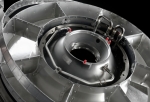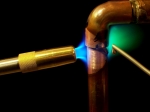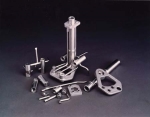SOLUTIONS & SERVICES
Solutions & Services
Brazing Services

S-Bond Technology and its personnel have extensive experience in materials joining and can assist you in your applications. offers various brazing services for your components and your prototypes.
Compared to soldering, brazing is the joining of metal and ceramic components using a molten filler metal that melts above 850ºF (450ºC). Filler metals include Al-Si, Cu-Ag, Cu-Mn, Cu-P, Cu, Ag, Au, and Ni-Cr-Si and Ni-Cr-Si-B as well as other less used metal fillers, that will wet and adhere to metals and, in special cases, to ceramics. When brazing to ceramics, active elements such as Ti, Hf, Zr and V have been added to filler metals. The addition of these reactive elements permits them to react with the ceramic surfaces during brazing, but only in a vacuum atmosphere. S-Bond Technology has specific expertise in brazing metals to ceramics using direct “active braze” technology.
Please Contact Us to assist you with this specialized braze process and for any vacuum braze processing requirements you may have.
Brazing Process Information
When brazing the component metal surfaces, they must be heated over the filler melting temperatures, typically above 850ºC, and even higher for the Ni-based filler metals. When heating to these temperatures, a flux or atmosphere that chemically or physically reduces the surface oxides that forms the metals is essential for brazing to work. In order for a molten filler metal to “wet”, which is to flow evenly and adhere as a liquid, the metal surfaces have to be free of oxides. Once the molten filler metal spreads or, via capillary action, is pulled into a joint, the heat source is removed to permit the filler metal to solidify and develop a bond to the metal.
The major types of brazing are:
- Flux brazing
- Torch (or other concentrated heat source)
- Resistance
- Furnace
- Dip Brazing (mainly used for aluminum)

Flux brazing normally utilizes more intense heating torches which are normally different that those used in soldering due to the need to melt higher temperature metal filler metals. As such, the higher component surfaces are subjected to more discoloration, distortion, and softening than with soldering. The fluxes are normally much more aggressive than solder fluxes due to the need to remove more oxide and to provide a “local” atmosphere as the flux heats and interacts with the component surfaces and the molten filler metals. Upon cooling, fluxes often slag to the surface and form glass-like deposits that may need to be cleaned.
The furnace braze processes listed below all utilize controlled heating furnaces (batch or continuous) where parts are fixtured and heated over the filler metal liquidus temperatures. The process listed below differentiate themselves by the atmospheres used in the furnace enclosure that interacts with the brazing filer metals and part surfaces.
- Controlled atmosphere brazing
- Exo-atmospheres (normally used in belt furnaces)
- Nitrogen / Hydrogen (belt of batch furnaces)
- Vacuum (batch furnace)

Controlled atmosphere brazing provides an environment that is non-oxidizing and typically reducing in order to clean the metal surfaces being brazed. The cleanest and least oxidizing furnace atmospheres are vacuum; as such, vacuum brazing is being used more often for the braze joining of many components. In the case of active brazing and high temperature Ni-based alloy brazing, vacuum brazing is the only process that works.
Note that brazed joints can have strengths up to the component metal strength, especially when braze/joint gaps are small and controlled. Thus brazing is used in much more critically stressed joints as opposed to solder bonding. Joint design and component fixturing are more critical in brazing due to the higher temperatures where thermal expansion and thermal expansion mismatch play a larger role.
Contact Us for assistance in assessing your bonding needs and meeting your brazing requirements. We offer a range of brazing services on-site at our facilities and through affiliated partner facilities. If we cannot offer the service, our engineers will refer you to suppliers that can meet your needs.
More Information?
If you would like someone to contact you or provide information, please submit the information to the right.
